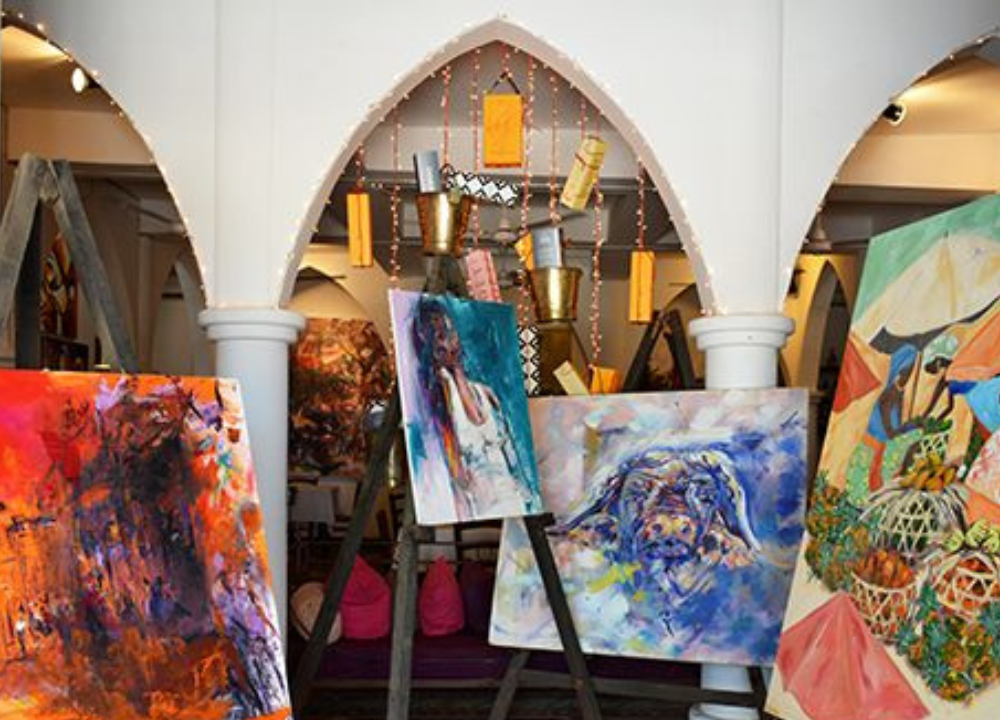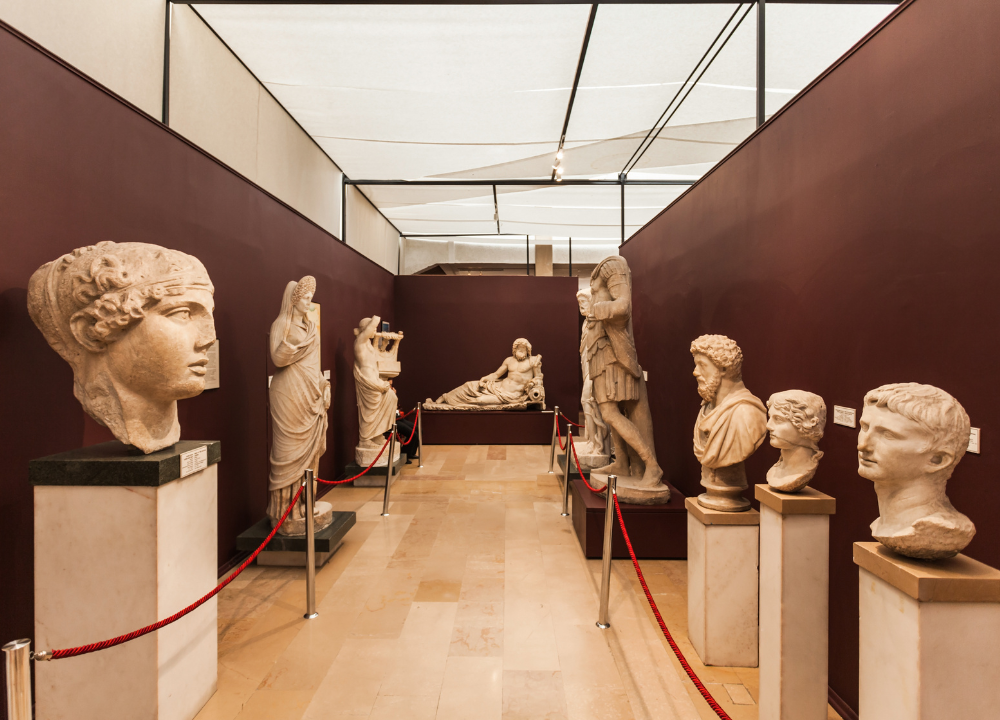The performing arts play a crucial role in cultural preservation. They connect us to our history, traditions, and values.
From dance to theater, these art forms help keep cultures alive. They tell stories that reflect our shared experiences and unique identities. In many communities, performing arts serve as a bridge between generations. They allow older generations to pass down traditions to younger ones.
This exchange enriches our society and strengthens our sense of belonging. Understanding the link between performing arts and cultural preservation is vital. It highlights the importance of supporting these art forms. They not only entertain but also educate and inspire. Join us as we explore this essential connection and its impact on our world.
Role Of Performing Arts
Performing arts play a crucial role in cultural preservation. They connect people to their roots and traditions. Through dance, music, and theater, communities express their stories. These art forms keep cultures alive. They help us understand our past and present. The role of performing arts in cultural preservation is vital. It fosters identity, unity, and continuity in diverse societies.
Cultural Expression
Performing arts serve as a powerful means of cultural expression. They allow individuals and communities to share their unique stories and traditions. These art forms reflect the values, beliefs, and history of a culture. Through music, dance, and drama, people convey emotions and ideas that words alone cannot express.
Some key benefits of performing arts in cultural expression include:
- Preservation of Traditions: Performing arts keep traditional practices alive.
- Representation: They provide a voice to underrepresented groups.
- Education: They teach younger generations about their heritage.
- Innovation: Artists blend old and new styles to create fresh expressions.
Here is a table highlighting different performing arts and their cultural significance:
| Performing Art | Cultural Significance |
|---|---|
| Dance | Expresses community rituals and celebrations. |
| Theater | Tells historical and social stories. |
| Music | Conveys emotions and unites people. |
In this way, performing arts not only entertain but also enrich cultural identity. They encourage communities to celebrate and share their unique heritage.
Community Engagement
Performing arts foster community engagement. They bring people together for shared experiences. Events like theater productions, dance festivals, and concerts create a sense of belonging. This engagement strengthens community bonds and promotes collaboration.
Benefits of community engagement through performing arts include:
- Social Connection: Arts events help people meet and connect.
- Collaboration: Artists and community members work together on projects.
- Skill Development: Participants learn new skills through workshops.
- Awareness: Arts events raise awareness about local issues.
For example, community theater can involve local residents as performers, writers, or crew members. This participation enhances pride and ownership in local culture.
Ultimately, performing arts engage communities in meaningful ways. They encourage dialogue and understanding among diverse groups. By participating in the arts, communities can preserve their cultures and grow together.
Historical Significance
Performing arts play a key role in cultural preservation. They connect us to our history and shape our identities. The historical significance of these arts is profound. They carry stories, traditions, and values from the past into the present. This link between performance and history enriches our cultural landscape.
Traditions Through Time
Traditions in performing arts have been passed down through generations. Each culture has its unique forms of expression, such as dance, music, and drama. These traditions help to keep history alive. They tell us about the lives and beliefs of our ancestors. Here are some key aspects of traditions:
- Storytelling: Oral traditions share important events and lessons.
- Rituals: Many performances are part of religious or cultural ceremonies.
- Community: Performances often bring people together, strengthening community bonds.
Different regions have different styles. Here’s a table showing examples:
| Region | Traditional Art Form | Purpose |
|---|---|---|
| Africa | Drumming and Dance | Celebration and storytelling |
| Asia | Classical Dance | Religious and historical narratives |
| Europe | Opera | Drama and emotion |
| Americas | Folk Music | Cultural identity and history |
These traditions not only entertain but also educate. They teach us about our past and inspire future generations.
Influences On Modern Art
Modern art has deep roots in traditional performing arts. Many contemporary artists draw inspiration from their cultural heritage. This connection shapes their work and reflects societal changes.
- Cultural Fusion: Artists blend traditional and modern styles.
- Social Commentary: Performing arts address current issues, reflecting society.
- Innovation: New technologies enhance traditional performances, creating fresh experiences.
Consider these examples of modern influences:
- Hip-hop dance combines traditional moves with urban styles.
- Contemporary theater often revisits classic plays with new perspectives.
- Music genres, like jazz, merge African rhythms with European influences.
These influences keep performing arts relevant. They show that history is not static. It evolves and adapts, shaping the future of art.
Cultural Identity
Performing arts play a crucial role in shaping cultural identity. They reflect traditions, stories, and values. Through music, dance, and theater, communities express who they are. This expression helps preserve their unique heritage. Cultural identity connects people to their roots. It fosters pride and belonging in society.
Preserving Heritage
Heritage is the foundation of cultural identity. It includes customs, languages, and art forms passed down through generations. Performing arts serve as a living archive of this heritage. They help keep traditions alive and relevant. Here are some ways performing arts contribute to heritage preservation:
- Reviving Traditional Practices: Artists learn and teach traditional skills.
- Documenting Histories: Performances tell stories of past events and cultures.
- Creating Community Events: Festivals and shows bring people together to celebrate.
Performing arts also adapt to modern contexts. This ensures heritage remains vibrant. Below is a table showing examples of performing arts that preserve cultural heritage:
| Type of Art | Example | Region |
|---|---|---|
| Dance | Bharatanatyam | India |
| Music | Flamenco | Spain |
| Theater | Noh | Japan |
These art forms do not just entertain. They educate people about their history and culture. By participating in these art forms, communities keep their heritage alive.
Fostering Belonging
Cultural identity fosters a sense of belonging. Performing arts create spaces where people connect. They bring individuals together, forming bonds and friendships. Here are some ways performing arts foster belonging:
- Building Community: Shared performances create unity among diverse groups.
- Encouraging Participation: Everyone can take part, regardless of skill level.
- Celebrating Diversity: Various cultures can showcase their unique arts.
Through performing arts, people feel valued. They recognize their contributions to society. This sense of belonging enriches community life. Events such as local festivals and performances highlight this connection. They allow individuals to express their identities. This expression strengthens community ties.
Performing arts also provide a platform for voices often unheard. They help marginalized groups share their stories. This inclusion promotes understanding and empathy. Ultimately, fostering belonging through performing arts nurtures a healthy, vibrant community.
Challenges In Preservation
Performing arts play a crucial role in cultural preservation. They connect people to their history and traditions. However, many challenges affect this vital link. Preserving cultural expressions through performing arts is not easy. Various factors threaten their survival. Understanding these challenges helps us protect our rich cultural heritage.
Globalization Effects
Globalization has a significant impact on cultural preservation. It brings different cultures together, but it also poses threats. Local traditions may fade as global influences grow. Here are some effects of globalization:
- Homogenization of Cultures: Unique local customs often blend into mainstream culture.
- Loss of Traditional Skills: Younger generations may prefer global art forms over local practices.
- Market Dominance: Global entertainment industries overshadow local performers.
The table below highlights some key aspects of globalization’s impact:
| Impact | Description |
|---|---|
| Increased Exposure | Local artists gain access to global audiences. |
| Risk of Erasure | Local art forms may disappear due to global trends. |
| Economic Challenges | Local artists struggle to compete with larger, global entities. |
While globalization can help spread awareness, it often dilutes local cultures. This dual effect creates a complex challenge for cultural preservation.
Resource Limitations
Resource limitations are another major challenge in cultural preservation. Many performing arts rely on financial support, skilled personnel, and proper venues. Unfortunately, these resources are often scarce. Here are some common limitations:
- Funding Issues: Many local art projects lack sufficient financial backing.
- Limited Access to Training: Opportunities for artists to learn and develop their skills can be scarce.
- Inadequate Infrastructure: Many communities lack the facilities needed for performances.
Consider the following points about resource limitations:
- Cultural programs require consistent funding.
- Training programs need qualified instructors.
- Venues must be accessible to encourage participation.
Without adequate resources, many local art forms struggle to survive. Addressing these limitations is essential for preserving cultural heritage through performing arts.
Innovative Approaches
Performing arts and cultural preservation connect closely. Innovative approaches help protect traditions and histories. These methods use technology and teamwork. They ensure cultural expressions live on. The world can benefit from diverse stories and performances. Let’s explore how digital preservation and collaborative projects play a vital role.
Digital Preservation
Digital preservation has changed how we keep performing arts alive. It allows us to store performances, scripts, and other cultural items online. This method makes access easier for everyone. Here are some key benefits of digital preservation:
- Accessibility: People can view performances from anywhere.
- Longevity: Digital formats last longer than physical items.
- Documentation: Records help track the history of performances.
Many organizations use digital tools to protect their art. For example, some theaters digitize their archives. Others create virtual exhibitions. These efforts attract new audiences and engage younger generations.
Here’s a simple table showing examples of digital preservation:
| Method | Description |
|---|---|
| Video Recording | Captures live performances for future viewing. |
| Online Archives | Stores scripts, photos, and historical data. |
| Virtual Reality | Creates immersive experiences of performances. |
These digital efforts ensure that the essence of performing arts remains intact. They protect cultural heritage for future generations.
Collaborative Projects
Collaborative projects unite artists and communities. They share knowledge and resources. This teamwork strengthens cultural preservation. Many successful partnerships have emerged globally.
These projects often focus on:
- Community Engagement: Local groups help create and participate in performances.
- Cultural Exchange: Artists from different backgrounds share their traditions.
- Education: Workshops teach skills and raise awareness about cultural heritage.
For instance, some festivals invite artists worldwide. They showcase diverse performances and promote cultural understanding. Here’s a list of notable collaborative projects:
- International Folk Festivals
- Cross-Cultural Dance Programs
- Heritage Workshops in Schools
Such initiatives create strong bonds among artists and audiences. They make cultural preservation a shared mission. Through collaboration, the performing arts continue to thrive.
Conclusion
Performing arts play a key role in cultural preservation. They keep traditions alive and connect generations. Through dance, music, and theater, communities share their stories. This sharing fosters understanding and respect. It helps people appreciate diverse cultures. Supporting the arts strengthens cultural ties.
Everyone can take part in this important work. Attend local shows, support artists, and share your experiences. Together, we can protect our rich heritage for future generations. Embracing the arts is embracing our culture. Let’s keep this vital link strong.




